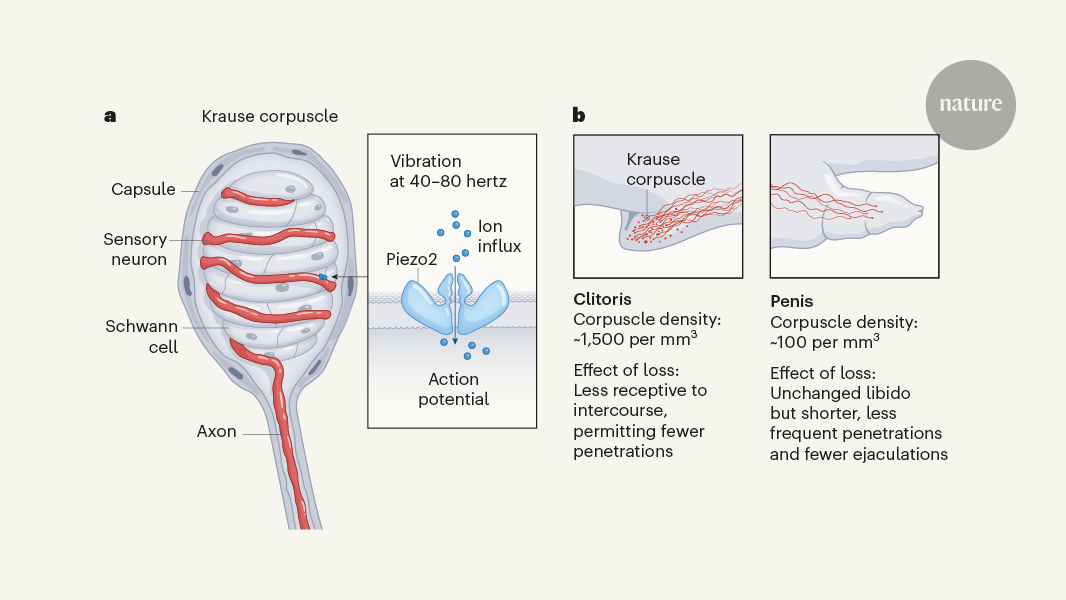Specialized Touch Neurons in Sex Organs Detect Vibrations and Light Touch, Enabling Sexual Behaviors
The article discusses the discovery that touch-sensing neurons called Krause corpuscles, which are found in clusters in the genitalia of male and female mice, are responsible for detecting vibration and light touch. These specialized sensory structures play a crucial role in enabling and mediating sexual behaviors.
The article explains that touch is a fundamental sense that permeates all aspects of human life, from gentle caresses to firm handshakes. While touch is central to sexual encounters, the specific sensory structures and mechanisms underlying touch perception in the genital organs have remained largely unknown.
The researchers found that Krause corpuscles, which are dispersed throughout the skin, are particularly concentrated in the genitalia of mice. These specialized neurons are able to detect vibrations and light touch, and their activation was found to be essential for various sexual behaviors in both male and female mice.
The study provides new insights into the neurophysiology of intimate touch and how it enables and shapes sexual interactions. Understanding the specialized sensory mechanisms in the genitalia can have important implications for research on sexual function, dysfunction, and potential therapeutic interventions.
Customize Summary
Rewrite with AI
Generate Citations
Translate Source
To Another Language
Generate MindMap
from source content
Visit Source
www.nature.com
Sex organs sense vibrations through specialized touch neurons
Key Insights Distilled From
by Anastasia-Ma... at www.nature.com 06-19-2024
https://www.nature.com/articles/d41586-024-01645-w
Deeper Inquiries
